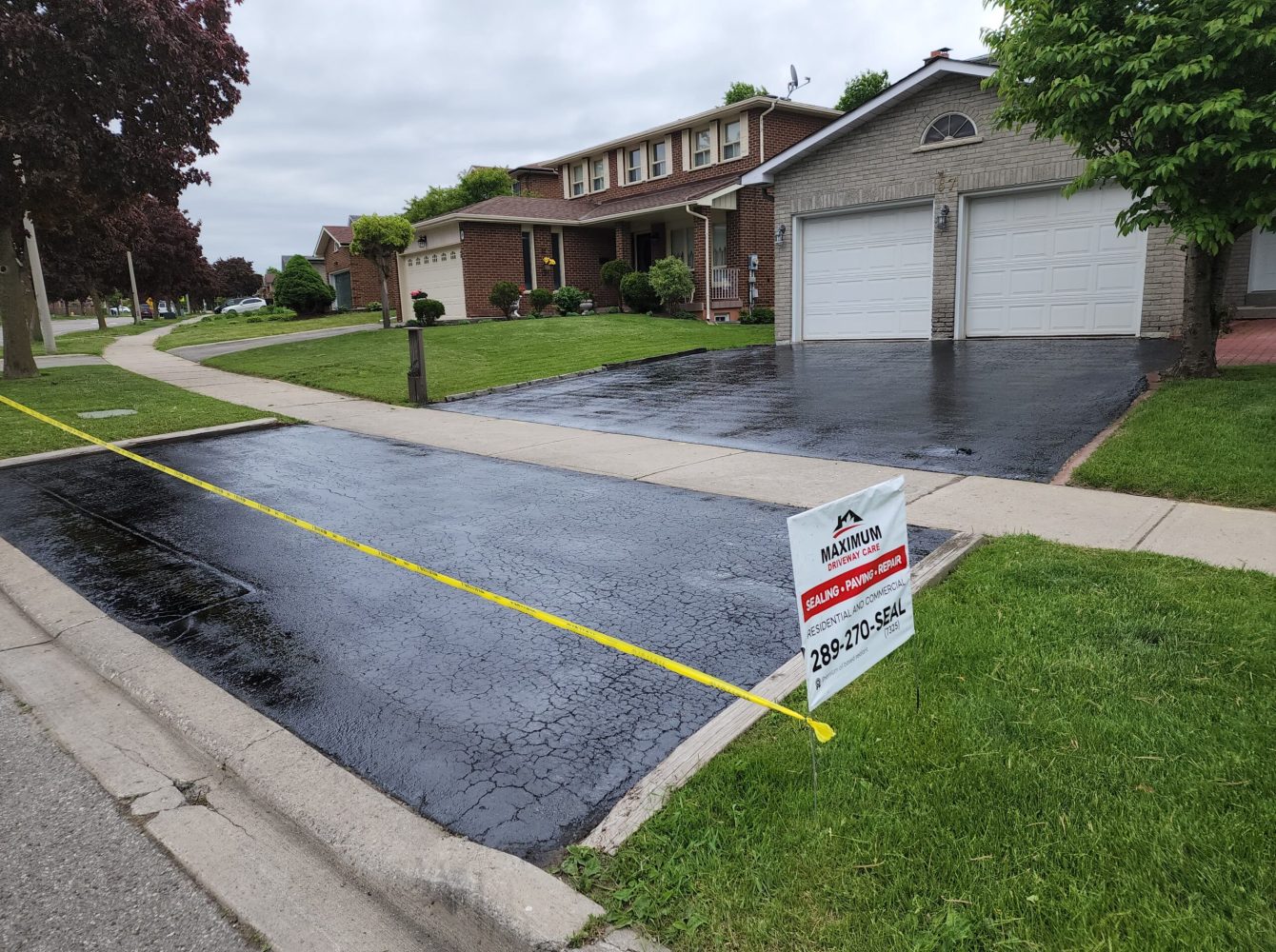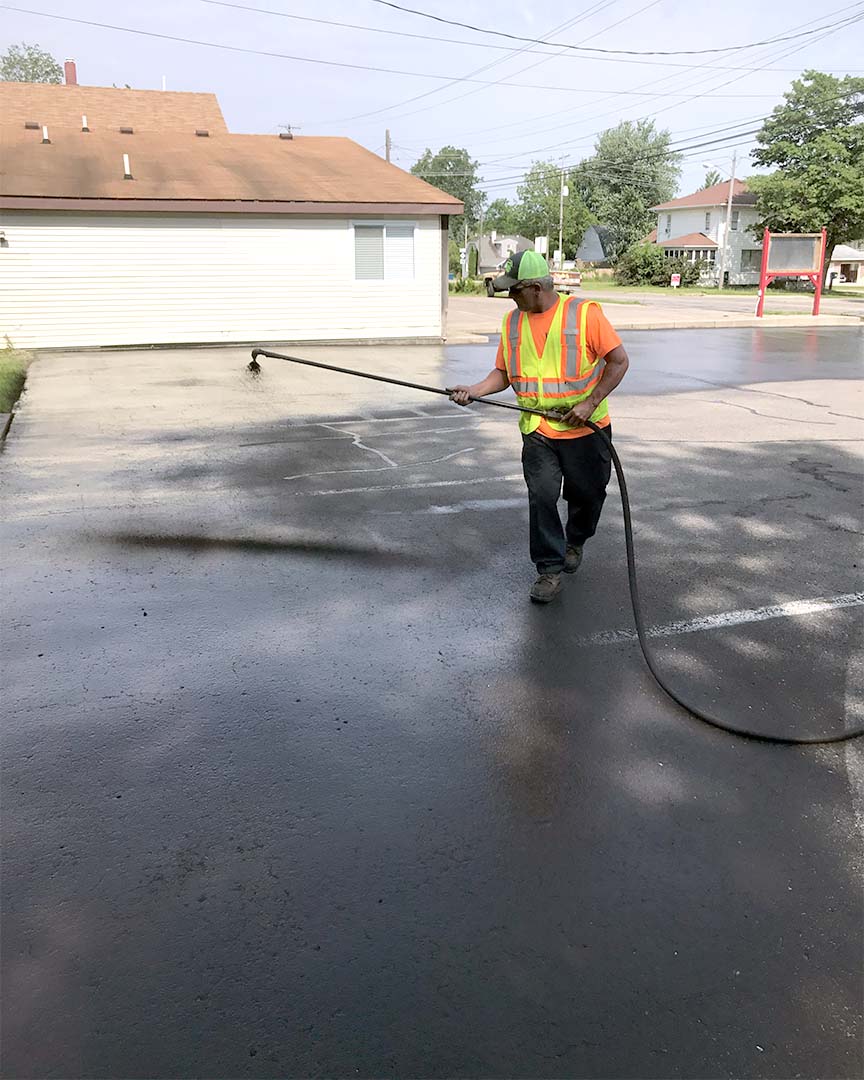Understanding Tilted Parking: How Asphalt Sealing Improves Industrial Great Deals
Understanding Tilted Parking: How Asphalt Sealing Improves Industrial Great Deals
Blog Article
Hot Mix Asphalt: A Sustainable Service for Pavement
Hot Mix Asphalt (HMA) has actually become a leading lasting option for sidewalk options, offering a myriad of innovative technologies and environmental benefits. Its capacity to reuse products and minimize energy consumption presents a compelling case for its fostering in roadway building tasks. Furthermore, the lasting efficiency and durability of HMA make it a recommended alternative for facilities development. As the demand for environment-friendly building practices expands, checking out the nuances of HMA's sustainability can provide beneficial insights right into the future of sidewalk options.
Ecological Benefits of Warm Mix Asphalt

Additionally, Hot Mix Asphalt assists to mitigate metropolitan warmth island results. Its dark color soaks up sunlight, decreasing the amount of warm mirrored back into the environment contrasted to lighter-colored pavements. This can decrease ambient temperatures in metropolitan locations, decreasing the need for a/c and ultimately lowering power consumption.
Additionally, Hot Mix Asphalt adds to boosted stormwater administration. Its permeable nature permits water to charge and penetrate the pavement groundwater materials, minimizing drainage and the threat of flooding. These environmental benefits make Hot Mix Asphalt a sustainable option for leading freeways and roadways.
Power Performance in HMA Manufacturing
Is power effectiveness an important aspect in the production of Warm Mix Asphalt (HMA)? Power plays a considerable role in the production of HMA, influencing both cost and ecological sustainability. One essential facet of power effectiveness in HMA manufacturing is the usage of warm mix asphalt (WMA) technologies.
In addition, improvements in plant modern technologies have led to even more energy-efficient HMA manufacturing processes. By maximizing energy use in HMA manufacturing, the industry can decrease its carbon footprint while maintaining high-grade pavement materials.
Recyclability of Warm Mix Asphalt
The recyclability of Warm Mix Asphalt (HMA) is a pivotal facet of its sustainability and long-term environmental effect. HMA is just one of one of the most recycled materials in the United States, with over 100 million lots of reclaimed asphalt pavement (RAP) being reused every year in new pavement building. Reusing HMA supplies numerous ecological advantages, such as reducing the need for virgin materials, reducing power intake during production, and decreasing the amount of waste sent to garbage dumps.
The procedure of reusing HMA includes milling the existing sidewalk, squashing it into smaller pieces, and blending it with brand-new aggregate and asphalt binder to develop a recycled mix. On the whole, the recyclability of HMA plays a substantial duty in promoting sustainable practices within the pavement sector.

Long-Term Efficiency of HMA
Asphalt sidewalks demonstrate sturdiness and strength over an extensive period, mirroring the lasting performance of Warm click this link Mix Asphalt (HMA) Additionally, innovations in HMA innovation, such as the use of polymer-modified binders and warm mix asphalt, have actually better enhanced the longevity and long life of HMA pavements. By prioritizing high quality building and construction and maintenance methods, HMA continues to confirm itself as a lasting and affordable service for lasting sidewalk facilities.

HMA: Toughness and Sustainability
Showing both resilience and sustainability, Hot Mix Asphalt (HMA) has become a cornerstone in the construction of durable sidewalk infrastructures - hot mix asphalt. HMA's toughness stems basics from its capacity to stand up to hefty tons, rough weather, and high traffic volumes, making it a trustworthy option for roadways, highways, and airport terminal paths. The structure of HMA, which typically includes accumulations, binder, and filler, plays an important duty in enhancing its longevity and resistance to tear and put on
Moreover, HMA's sustainability hinges on its recyclability and energy-efficient manufacturing procedure. The ability to reuse reclaimed asphalt sidewalk (RAP) in brand-new HMA mixtures decreases the demand for virgin products and decreases the ecological influence of pavement building and maintenance. Furthermore, the power performance of creating HMA depends on its reduced blending temperature levels compared to other pavement products, bring about reduced energy consumption and greenhouse gas emissions.
Final Thought
In final thought, warm mix asphalt (HMA) offers a lasting option for sidewalk with its ecologically pleasant features. HMA's recyclability, power effectiveness in production, and lasting longevity make it a green option for roadway building and construction.
HMA is one of the most recycled materials in the United States, with over 100 million loads of redeemed asphalt pavement (RAP) being recycled every year in brand-new pavement building and construction.The process of reusing HMA includes crushing click over here now the existing pavement, crushing it into smaller sized pieces, and blending it with brand-new aggregate and asphalt binder to develop a recycled mix.Asphalt pavements show toughness and resilience over an extensive period, showing the long-term performance of Warm Mix Asphalt (HMA) Additionally, improvements in HMA technology, such as the usage of polymer-modified binders and cozy mix asphalt, have better boosted the sturdiness and long life of HMA pavements. The capability to recycle reclaimed asphalt pavement (RAP) in brand-new HMA blends reduces the need for virgin products and minimizes the environmental influence of pavement construction and upkeep.
Report this page